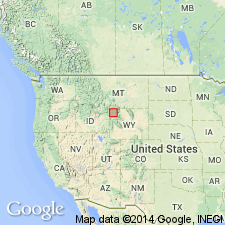
- Usage in publication:
-
- Obsidian Creek Member*
- Modifications:
-
- Named
- Dominant lithology:
-
- Rhyolite
- AAPG geologic province:
-
- Yellowstone province
Summary:
Named as a member of Plateau Rhyolite for exposures on Obsidian Creek (its type area) northwest Yellowstone National Park, WY in Yellowstone province. Is comprised of a series of isolated rhyolitic lava flows and domes wholly outside the Yellowstone caldera. Is therefore difficult to define in traditional stratigraphic terms. Plagioclase is a common phenocryst type. The following are included in the member: mixed lavas of Gardner River and Grizzly Lake; the Willow Park, Apollinaria Spring, Landmark, Gibbon Hill, Geyser Creek, and Pointpot eruptive domes. Considered younger than Mallard Lake Member (new) of Plateau. No radiometric determinations have been made. Thought to be younger than Lava Creek Tuff (new) of Yellowstone Group (rank raised). Is part of the third volcanic cycle of the Yellowstone Plateau.
Source: GNU records (USGS DDS-6; Denver GNULEX).
For more information, please contact Nancy Stamm, Geologic Names Committee Secretary.
Asterisk (*) indicates published by U.S. Geological Survey authors.
"No current usage" (†) implies that a name has been abandoned or has fallen into disuse. Former usage and, if known, replacement name given in parentheses ( ).
Slash (/) indicates name conflicts with nomenclatural guidelines (CSN, 1933; ACSN, 1961, 1970; NACSN, 1983, 2005, 2021). May be explained within brackets ([ ]).

